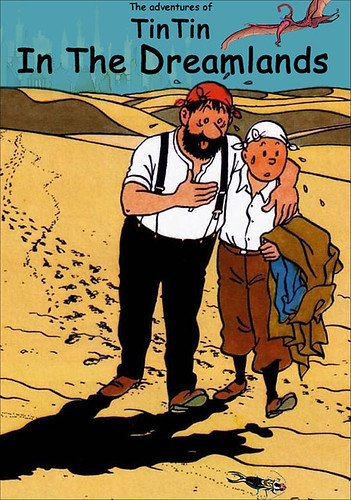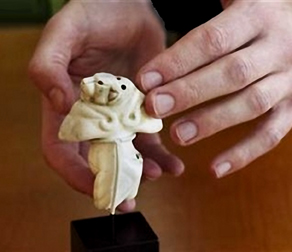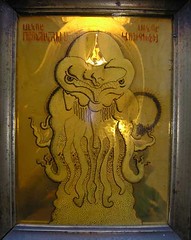The image of the
plague doctor with his peculiar protective costume is well documented by period descriptions and engravings. The best known is
Der Doctor Schnabel Von Rom by Paul Furst although there are several other images.
A quick image google of “plague doctor mask” will uncover a wealth of images from costumers and historical sources.
This is basically an early chemical warfare protective suit because during that period doctors believed that plagues were caused by bad or poisoned air, better known as miasma. Starting in the 14th century, plague doctors began putting together protective costumes to try to avoid infection and over the years the costume stayed basically the same.
 As may be seen on picture here,
As may be seen on picture here,
In Rome the doctors do appear,
When to their patients they are called,
In places by the plague appalled,
Their hats and cloaks, of fashion new,
Are made of oilcloth, dark of hue,
Their caps with glasses are designed,
Their bills with antidotes all lined,
That foulsome air may do no harm,
Nor cause the doctor man alarm,
The staff in hand must serve to show
Their noble trade where'er they go

The black hat is distinctive for doctors of the period and identifies the wearer as a practitioner. The beak mask is a gas mask made of leather with the front end with strong aromatic herbs and spices to kill off or deter the miasma, the supposed origin of plague. At best, the mask cut down on stench. The eyes were protected with glass where could be clear or red which would filter out evil hopefully. The long black overcoat was coated with suet or wax to make the suit waterproof, which actually functioned to protect the wear from respiratory spray in the case of pneumonic plague. The other explanation is that the material would attract plague away from a living person. The overcoat collar was tucked in under the mask to make a seal for the vulnerable neck area. The wooded cane was used to pull back bed sheets, uncover the patient for inspection, push back crazed patients or relatives and otherwise be uses as a manipulator to keep from touching infected persons and keep victim’s relatives at bay. Leather breeches were worn to protect against plague attack, because bubonic plague manifests itself in the armpits, neck and groin. In some cases the breeches were made with attached feet like hip waders. Leather gloves were also worn. No part of the body was exposed to open air, keeping the doctor safe from infection. The death rate among doctors was no better than the unprotected populace.


This terrifying costume is also associated with
Commediadell Arte in a character called
Medico della Peste and it remains a popular mask for Venetian carnival.
Sometimes the mask has a set of overlarge spectacles, which were rare and associated with learning.
The image of the plague doctor continues to intrigue costumers and gamers. There have been a few modern imaginings produced by modern mask makers and costumers. The specter image of the plague doctor has come down to us from the ages and takes shape again in carnival costumes, steampunk costume ideas, and science fiction convention costumes.
One of the most provocative mask makers I have run across is
Tom Banwell who also makes a Plague Doctor mask as well as great tutorials about mask making.
 Propnomicon has produced a number of interesting props for use on his blog. Recently, he made a more modern Arkham Sanitarium logo. Earlier he had an earlier style Arkham Sanitarium woven patch, which I used at a local convention as part of an understated costume. It was simply a blue blazer with the patch, black pants, tie & etc. You need not go overboard with a costume to make it effective. With that getup, I was the head of the board of directors of the Arkham Sanitarium. Please don’t ask about funding your project, it’ll be taken up at the next board meeting.
Propnomicon has produced a number of interesting props for use on his blog. Recently, he made a more modern Arkham Sanitarium logo. Earlier he had an earlier style Arkham Sanitarium woven patch, which I used at a local convention as part of an understated costume. It was simply a blue blazer with the patch, black pants, tie & etc. You need not go overboard with a costume to make it effective. With that getup, I was the head of the board of directors of the Arkham Sanitarium. Please don’t ask about funding your project, it’ll be taken up at the next board meeting.
















